
In this blog post: Are you looking to improve your students’ reading fluency? These 21 fun, hands on reading fluency activities make it easy!
Do you have students who can decode with the best of them, but when they read they. sound. like. this?
They can read and probably even understand the text, but it is slooooow and painful to listen to.
The missing piece of their puzzle is reading fluency.
Reading fluency is the ability to read with speed, accuracy, and expression.
Fluent readers are not choppy or robotic. They are able to recognize and read words automatically, which makes their reading smooth.
Why is reading fluency important?
Cognitive overload can quickly become a problem for our early readers.
If students are able to read fluently, they don’t have to dedicate as much brain space to decoding and reading each word. The words have become sight words to them because they recognize them by sight.
That means that they can now focus on the meaning of the words.
Reading fluency is important because it leads to better reading comprehension.
So how do we increase reading fluency in our students?
I’ve come up with 21 easy, hands on reading fluency activities that your students will love!
Notecard Words
This reading fluency activity couldn’t be easier. All you will need to do is write decodable words or sight words on notecards.
Pick a few cards at random and lay them out in a line. See how fast your student can read the words!
Then, have them close their eyes as you swap out one or two of the notecards.
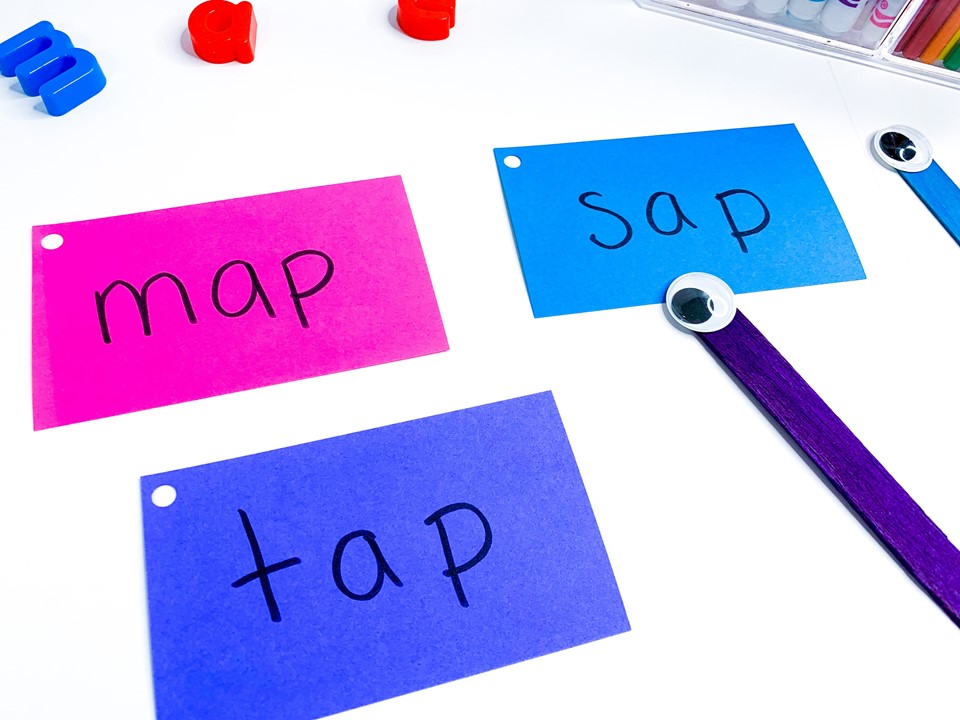
It’s so simple, but I’ve found that the best reading fluency activities usually are!
Beat the Timer
Write letters or words on a sentence strip or place those same notecards from the previous activity in a pocket chart.
Flip over a timer and see how many letters or words your student can read before the timer runs out. Can they beat the timer?
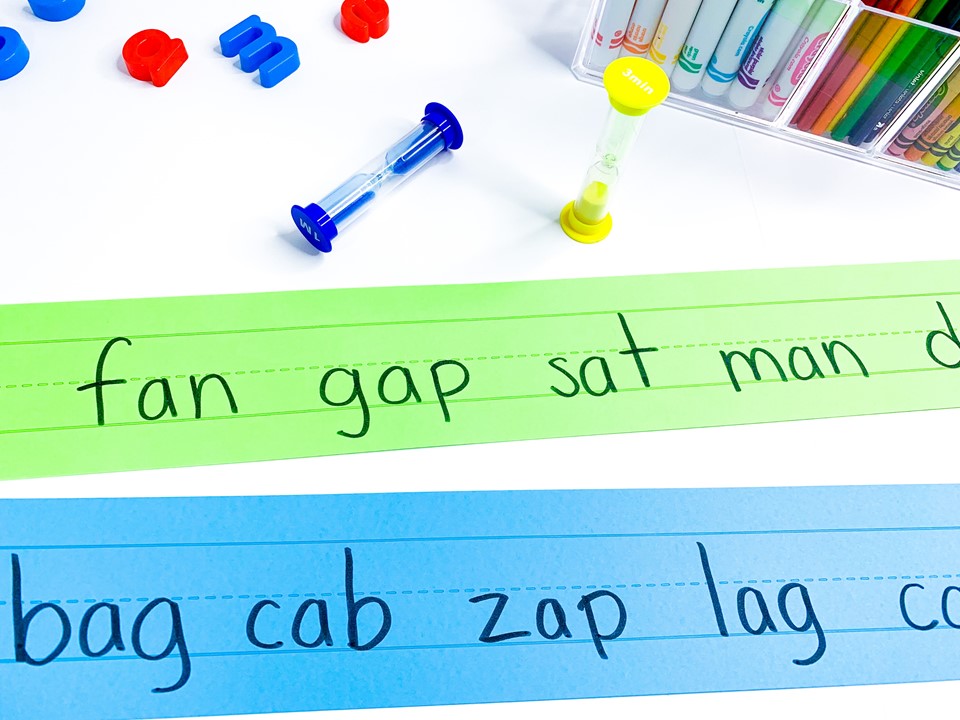
Starting to get stale? You can spice up any of your reading fluency activities by adding in fun props!
Tape a seasonal picture to a ruler and let students use it as a pointer. For example, in March you could use a leprechaun and see how fast he can run as you read.
You could also use a sock puppet “monster” and have him pretend to follow behind and “eat” the words as students read.
Reading Fluency Drills
In a similar vein, timed reading fluency drills are a great way to improve reading fluency in your students. You can use these in the same way you use Beat the Timer, but it’s a print and go option.
Just flip over a timer and see how many words students can read before the time runs out. Can they beat their previous times?
I love to use these timed reading fluency activities to assess students for progress monitoring. They are also a great option to send home in reading fluency folders.
Paired Reading
Paired reading is a research-based strategy that has been shown to greatly improve reading fluency. And thankfully this reading fluency activity couldn’t be simpler!
Basically, during paired reading, you partner two students up to read together. This can be a more fluent student and a less fluent student, or two students who are equally as fluent reading a previously read text.
Side note: This is why I like to have students keep their small group books in book bins. We send them home every few weeks so that they don’t get too full.
They will take turns reading to each other. This can look like:
- One child reads the entire book and then the other child reads the entire book
- They take turns reading every other page
- One student reads until you say, “Switch!” Then the other partner reads
Paired reading is also something that parents can do at home to improve reading fluency. You read a page and then let your child read a page.
Driving Words
There is just something about toy cars that makes any activity more fun! You can add cars into most reading fluency activities to instantly make it new again.
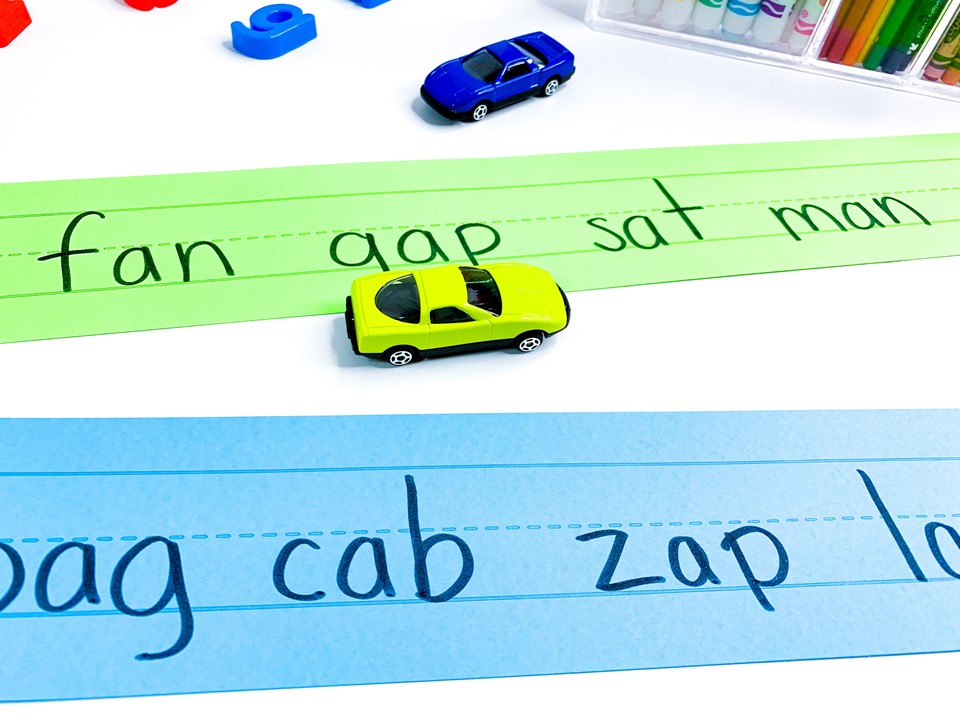
For example, grab those sentence strips or notecards you made above.
Your student can drive the car under the letters or words as they read. Simple and fun!
You can also use pre-made Fluency Roads. Each road targets a different set of letters or phonics skill. Students will love driving the fluency roads and reading the letters or words!
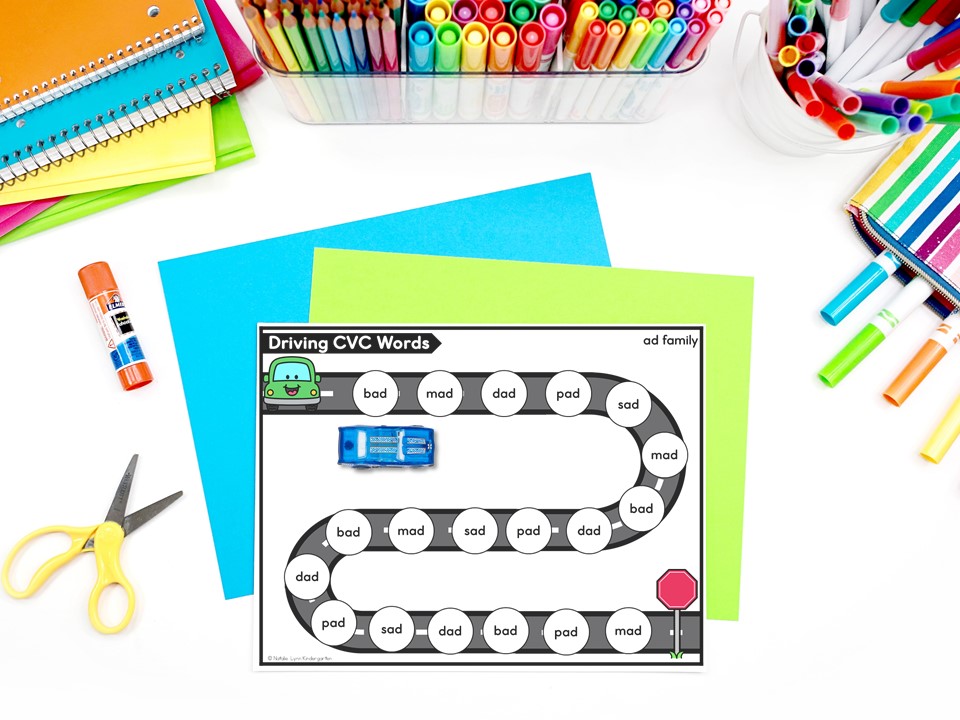
Echo Reading
You will display a sentence or page from a book. You read the page fluently. Then, your students will echo you and try to match your phrasing and expression.
I love to use the digital version of our decodable readers for this. I can project each page on the board and point to the words as I read.
Then, my students will echo after me.
You can also do echo reading during shared reading or weekly poems. When we read the weekly poem from my Empowering Little Readers units, I read a line or two and then students echo after me.
Silly Voice Cards
Need to change up these reading fluency activities? Grab these free silly voice cards and echo reading or choral reading instantly becomes hilarious to students!
Display words or a sentence. Then, choose a silly voice card.
Students will read the words or the sentence in that silly voice.
It makes reading the same sentence over and over seem like a game, not a chore!
Don’t want to print silly voice cards? Here are some ideas you can try:
Monster voice: growl the words in a deep voice
Mouse voice: say the words in a squeaky little voice
Rockstar voice: sing the words like a rockstar
Underwater voice: plug your noise like you’re diving underwater and then read the words
Roll and Read
Roll and read is a fun reading fluency activity that can be added into centers, as a small group warm up, or sent home.
Students will roll a die. They will go to the corresponding row and read the letters or words as fast as they can.
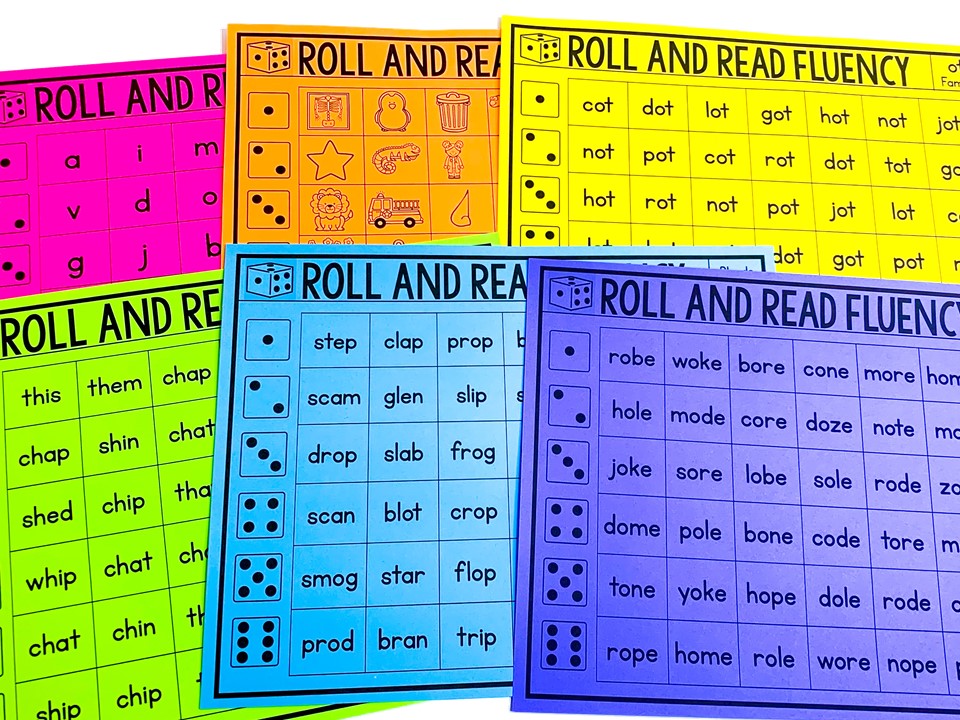
You can also make this a partner reading fluency activity by having them take turns rolling and reading to a friend.
Changing Up Punctuation
How we read a sentence will change depending on what punctuation is at the end. Consider these three sentences:
I did that last night.
I did that last night?
I did that last night!
The way you read each of those sentences, even in your head, was probably very different. The meaning of the sentence can also change depending on the punctuation.
This Changing Up Punctuation activity can help students learn to attend to punctuation marks as they are reading.
You will want to write sentences on sentence strips. You will also want to write punctuation marks and cut them apart.
Display a sentence and put a punctuation mark at the end. Have students read the sentence to make sense with that punctuation.
Then, you can either swap the punctuation mark or swap the sentence.
Decodable Fluency Sentences
Decodable fluency sentences are easy reading fluency activities to add as a small group warm up or just when you have extra time. Just give students a ring and let them read!

You can make Decodable sentences even more fun by adding in fun pointers or google eye rings (however, I’ve found that you don’t need to. Kids just love that they can read!)
You can also add these decodable sentences to a fluency station.
If you have a fluency station as a choice during literacy centers, students can go there and choose different fluency activities like beat the timer, roll and read, and reading sentences.
You can differentiate this center by color-coding the activities for each group – the same as how I color code during literacy centers.
Daily Read Alouds
Okay, I realize that this isn’t really an activity for your students… but having daily read alouds is one of the most important reading fluency activities you can do!
Students need to hear fluent readers so that they understand how text is supposed to sound.
The best way for you to model reading fluently is with a read aloud.
There are also many websites now that have read alouds for students, including Epic! and Storyline Online.
Sentence Pyramids
Sentence pyramids are a great way to work on reading fluency at the sentence level.
You can use pre-made sentence pyramids or make your own by simply writing them on the board!
Students will start by just reading the first word. Then, they will add on one more word at a time as they go down the pyramid.
Sentence pyramids allow your students to focus on each word one at a time, while building fluency as they go.
Work On Those Sight Words
I know there has been some debate on whether we should still spend time working on sight words or high frequency words.
To me, the answer is still YES!
High frequency words or sight words are going to show up over and over again in the texts your students are reading.
If they are able to read those words fluently, they can spend more energy on decoding and reading new words.
Your sight word fluency activities don’t have to be anything crazy. You can use the same reading fluency activities as shown above!
You can also add in sight word centers and games that’s our students can play with partners.
Whisper Phones
We want our students to be able to listen to themselves read so they can assess what sounds right and what doesn’t.
Whisper phones are a great way to do that! Students can whisper into the phone as they read.
Even though it’s a whisper, the phone magnifies the sound in their ear. That means you can have students reading all over the room, but still able to only hear themselves.
You can buy pre-made whisper phones, but you can also DIY your own.
Scooping Phrases
Scooping phrases is an easy sentence-level reading fluency activity. You can scoop phrases in isolation or in a sentence.
Sentences are usually made up of groups of words that we naturally group together as we speak. This activity helps students feel those phrases.

For this activity, you will scoop a phrase of around three words. A sentence might have multiple scoops in it.
Then, students will trace the scoop with their finger as they read that phrase. They will then move on and scoop the next phrase.
Finally, they can read the sentence all together.
Splash! Fluency Game
For this reading fluency game, you will type letters or words on the editable cards. You will cut them out and out them in a container along with the Splash! cards.
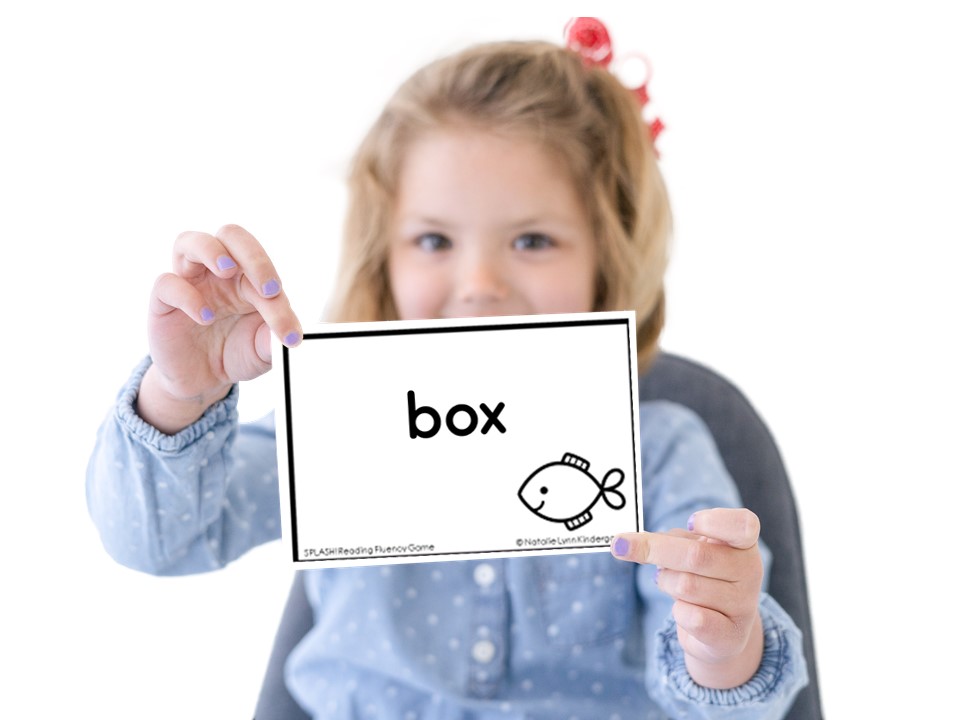
Students will take turns pulling out a card and reading it. If they can read it correctly, they get to keep it.
If a student pulls a Splash! card, they have to put all of their cards back.
You can grab the FREE editable cards here:
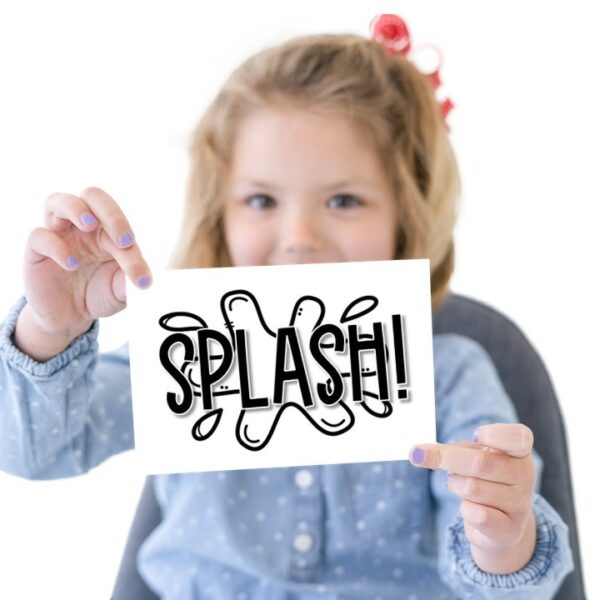
Do you love free stuff?
SPLASH Reading Fluency Game
This ready fluency game makes practicing reading fun!
Read the Room
This reading fluency activity is similar to write the room. Just hang up words or sentences around the room.
Students will walk the room and read! It couldn’t be easier!
If you want to assess that students are reading and comprehending, you can add in a recording sheet with a clipboard.
They will illustrate the words or sentences that they read in the boxes.
Grab the free Read the Room recording sheets here.
Building Nursery Rhymes
Nursery rhymes are often the first poems our students learn. They may even learn to “read” these nursery rhymes before they even learn letters.
Reading nursery rhymes is a great reading fluency activity, but you can extend the practice even more by having students build the nursery rhymes.
Just write each line or individual words (depending on how difficult you want to make it) on sentence strips.
Let students build the nursery rhyme – I do suggest giving them a model of the whole poem.
Then, they can read the poem to themselves, a partner, or a stuffed animal.
Fidget Popper Fluency
Have you jumped on the fidget popper train yet? Here’s yet another way you can use fidget poppers in your classroom!
Grab those notecards or sentence strips you made earlier.
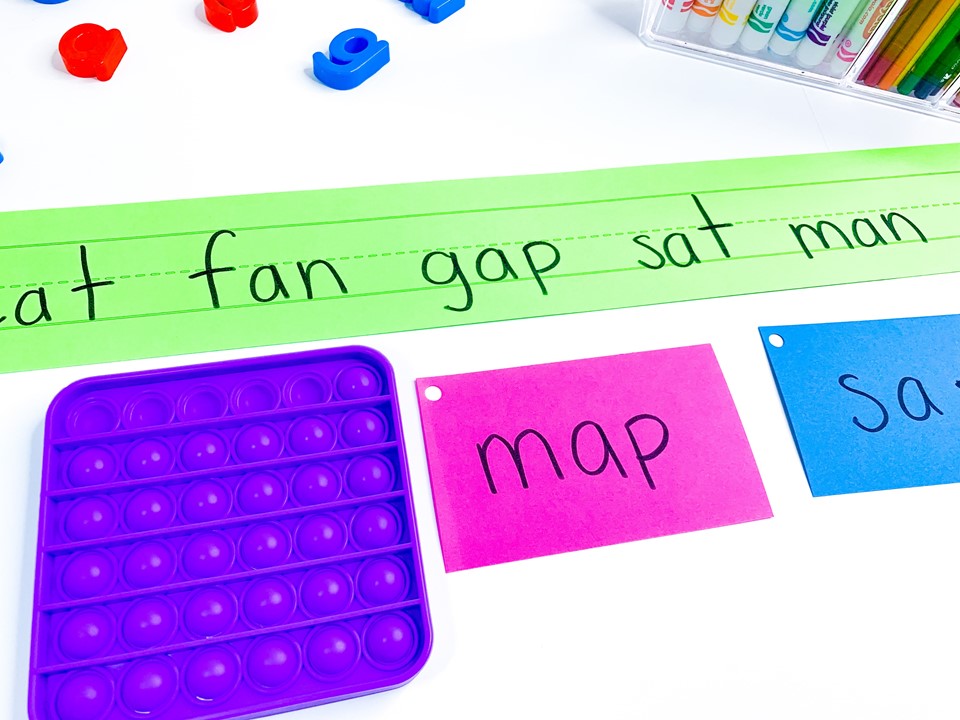
As students read words, they get to pop the bubbles on the fidget popper! One pop for each word read. The faster they read the words, the faster they get to pop the bubbles.
Create Audio Books
The listening center is always a favorite for my students, so how fun would it be to create your OWN listening center audio books?
You can let students record themselves reading their familiar read books in their book box from small groups.
Then, they can play it back and listen to themselves read the story! They can easily assess how fluent they are, and it’s a big motivator.
If you use any apps in your classroom like Seesaw, they can make recording and storing these recordings easy.
Reading Fluency Centers
Giving your students time to work with decodable words and sentences during your literacy centers time can help cement those skills.
You do want to be careful that you are only giving your students centers that practice skills they’ve already learned. For example, this decodable sentence building center:
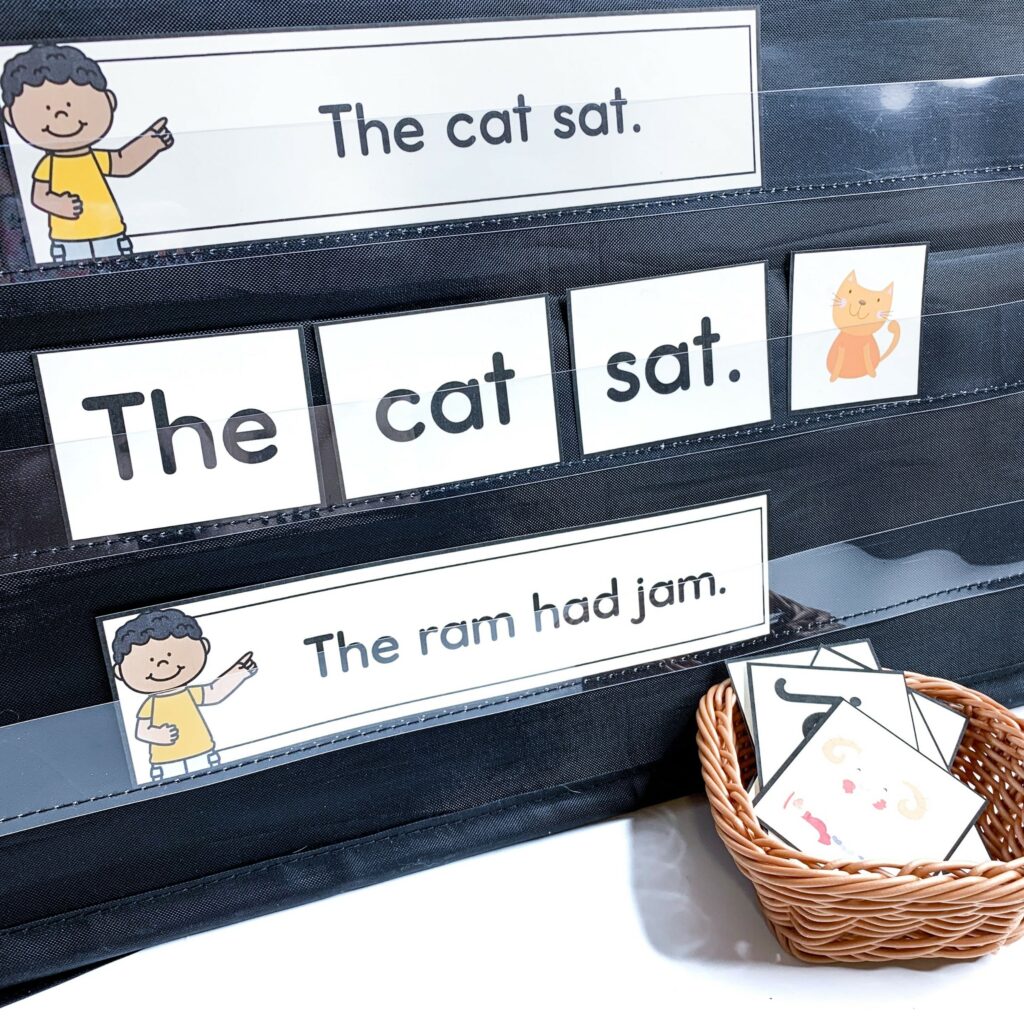
I would only choose sentences with words I know my students can decode.
Since they can decode the words, I know activity will give them practice reading the words and sentences fluently and with comprehension.
Read, Read, READ!
I know this one might seem kind of lame but… read, read, READ! Give your students time to practice reading ORALLY every single day.
Why orally? Well, if your students are reading in their heads, they can’t tell if they’re reading fluently or not and neither can you.
This can look like:
- Reading in small groups
- Having a set independent reading time with whisper phones
- Partner reading time
- Reading during centers
- Shared reading
- Reading at home
If you’re working on fluency, you will want to make sure that they are reading books or texts that are decodable to them. Previously read texts are the best.
I recommend keeping individual book boxes, bags, or folders that students can choose from during this time.
To Sum It Up
Reading fluency is so important because it’s a necessary step towards reading comprehension. Thankfully, there are many easy, hands on reading fluency activities you can use to improve reading fluency!
Pin this post for later:
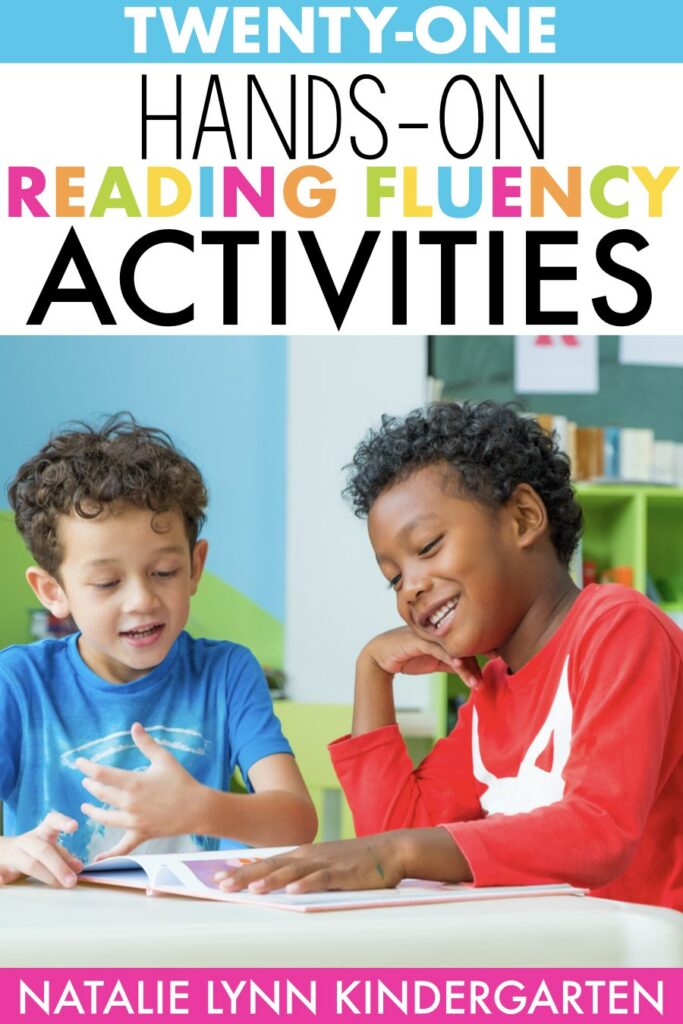

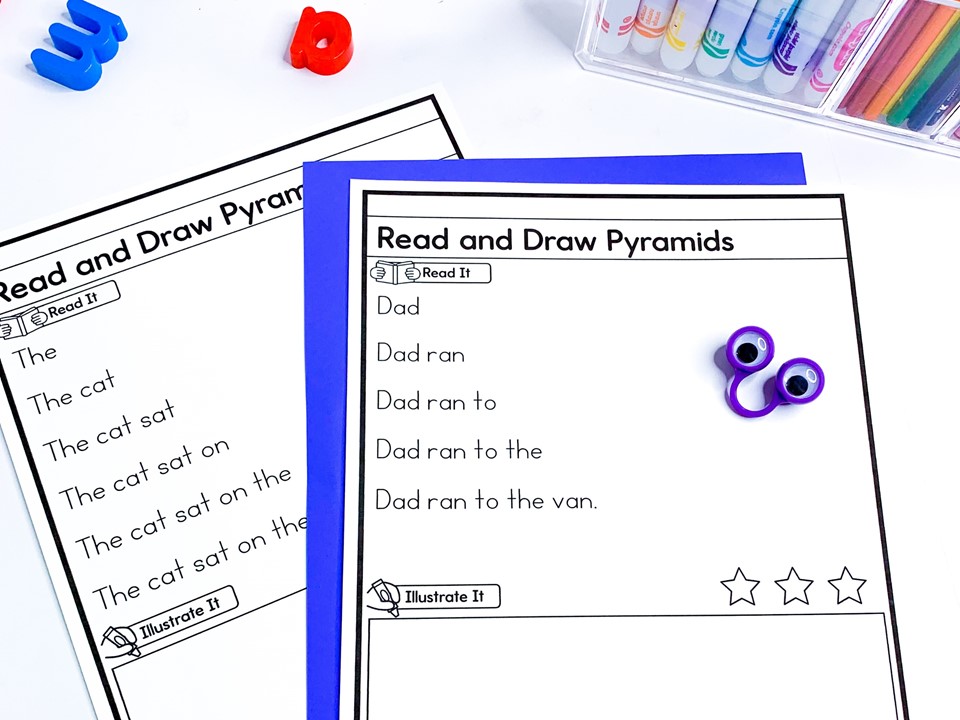

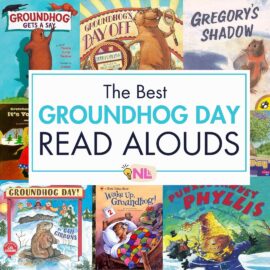
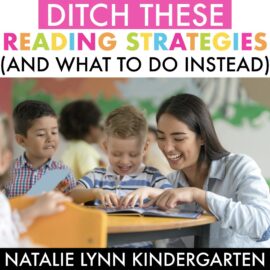


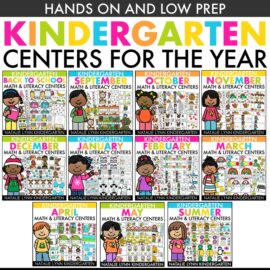
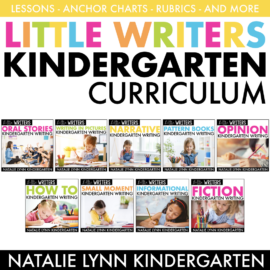
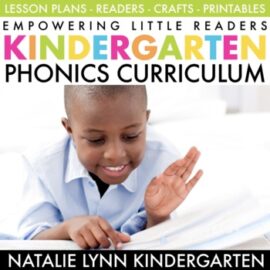
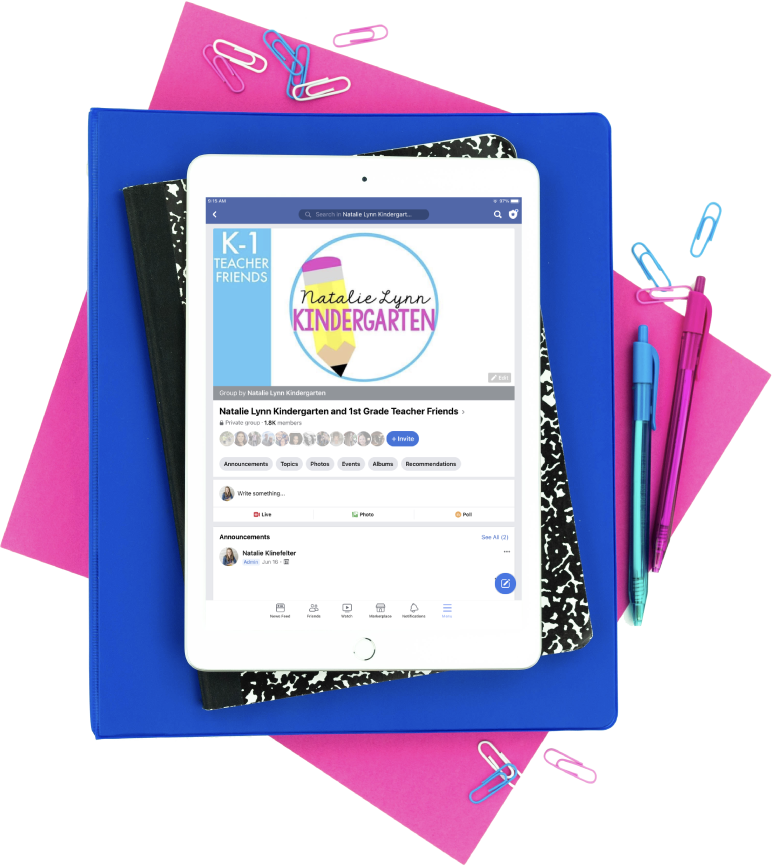

This was amazingly helpful. Some ideas I use already, however the range of simple, effective activities that engage students and develop skills is incredible. Thank you so much!